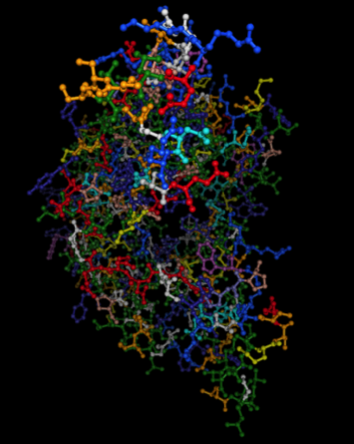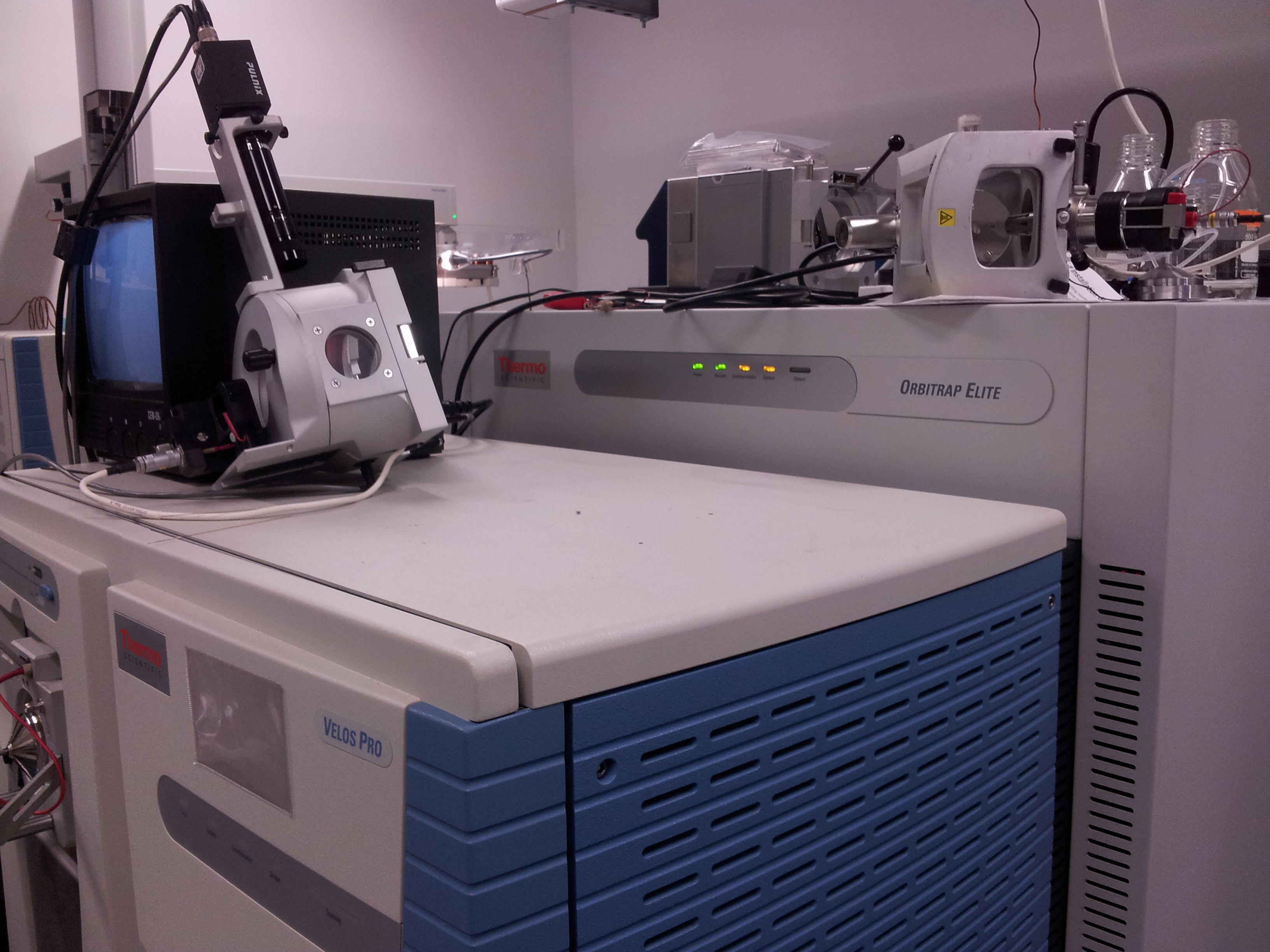


Proteomic technologies enable the identification or characterization of proteins in a biological system. Mass spectrometry is employed to determine the mass and sequence of proteins or peptides, with sufficient accuracy to permit matching to genome datasets. Proteomics can be exploited to describe the composition of the biological system of interest. With appropriate experimental design, proteomic approaches can report on the relative abundance of proteins under different conditions, such as health and disease.
Protein or peptide separation is generally a key initial step in proteomics, enabling the components of the protein mixture to be fractionated prior to mass spectrometry. Proteins and peptides can be separated by gel electrophoresis and chromatography, respectively, and combinations of these approaches can be exploited for high resolution separation.

Protein identification:
Comparative proteomic analysis:
More specialized analyses are available on request.
Preparing SamplesSending SamplesAnalysing SamplesOther
We can successfully analyse less than 1pM (50ng of a 50kDa protein), but success is more likely with more protein. Coomassie-stained spots/bands will contain sufficient protein, faint Sypro stained or silver stained spots/bands may not. Silver staining is not optimal since proteins are covalently modified – a MS compatible silver stain protocol must be used, and this reduces sensitivity. Non-covalent protein stains are preferred.
Tandem MS can identify multiple mixed proteins, but does not report relative abundance. Thus it is preferable to work with well isolated spots/bands. Gel cutting should be performed accurately, so that only the stained spot or band is excised.
Contaminating proteins, particularly human keratin, can confuse or confound the analysis. It is important to take precautions to avoid keratin contamination. Gloves should be worn for all procedures and all equipment should be clean. It is often helpful to use commercial gels and reagents.
We are better able to obtain an unambiguous protein identification if we know the species of origin and any relevant details about how the sample was prepared (any known or suspected post-translational modifications, was the sample from a 2D gel, an SDS-PAGE gel, was the sample artificially modified by alkylation etc.).
We kindly ask that the sample identification codes be sent along with the samples in Microsoft Excel® table using the sample submission form available from our Facility Administrator. Please include one printed list with the samples and also e-mail the file to us. In the table please include a unique code for each sample, as well as their position in the box or plate. We will run a batch of samples only if the samples and the sample list are matched. Please label all sample vials or plates clearly, using indelible ink.
Gel slices should be supplied in large (1.7mL) snap-cap microcentrifuge tubes, hydrated but without free liquid. Gel slices can be sent at ambient temperature but may be more stable when frozen. Proteins in solution should be sent in screw-capped tubes, to avoid leakage during transit, and shipped on dry ice.
Please provide samples in a labelled sample box (e.g. 15cm x 15cm) or bag — this not only makes them easier to store for us, but also ensures they neither get mixed up in transit nor become difficult to find when we receive them.
Please also label each tube clearly, uniquely and indelibly, indicating the date and the investigator’s initials on each tube. If it is necessary to supply samples in a different format, please contact us first.
When you fill in the sample submission form, please use the same labels as are on the tubes
Before sending your samples please fill in the sample submission form; available from our Facility Administrator. This ensures that we have all the required information about your sample, including the analysis plan, and also makes sure that we are able to run the samples in a random order. It is important that the labelling on the sample tubes matches the labelling on the submitted sample file.
Please ask us about recommended couriers for international delivery.
Please note that it is the responsibility of the user to ensure that the samples arrive at the facility. We would advise users to track the progress of their package daily.
Our postal address is:
IPA - Mass Spectrometry
Room B4.10 Joseph Black Building
College of Medical, Veterinary & Life Sciences
University of Glasgow
G12 8QQ
UK
Please enclose a printed copy of your sample submission form with your samples, and alert our Facility Administrator to let us know that the samples are on their way.
Important: Please follow the correct procedure given above for packaging the samples.
University of Glasgow users can deliver the samples to the Metabolomics Laboratory using the internal mail system. It is not advised to send samples on a Friday afternoon as they might not reach the facility until the following Monday morning.
To prioritize the delivery of your samples, please mark the box clearly to indicate that it contains dry ice. Please enclose a printed copy of your sample submission form with your samples, and alert our Facility Administrator to let us know that the samples are on their way.
Yes. If you are delivering your samples in person then please confirm a delivery time with a member of staff before travelling to the laboratory. As the building reception is manned only from 9:00–15:30, please do not attempt deliveries outside these times.
We routinely analyse protein samples in acrylamide gel pieces. The standard procedure involves in-gel trypsin digest, extraction of tryptic peptides, fractionation by RP-HPLC and online nanoelectropsray tandem MS. Data is searched via the Mascot search engine.
We can also work with proteins in solution, although solvent composition is important – please discuss this with our Proteomics Manager.
For standard analysis, you will be provided with a web-link to the results. An example of a Mascot Output output is given.
Standard analysis does not, if you are looking for quantitation please discuss with us the use of TMT labelling.
We aim to return data within 2 weeks of sample receipt.
Please contact us for costs, as these will vary from project to projects depending on instrumentation used and analysis requirements.
Only in very specific circumstances. In order to provide a high quality facility, it is essential that we limit access to the instrumentation to a handful of expert users.
Only in very specific circumstances. In order to provide a high quality facility, it is essential that we limit access to the instrumentation to a handful of expert users.